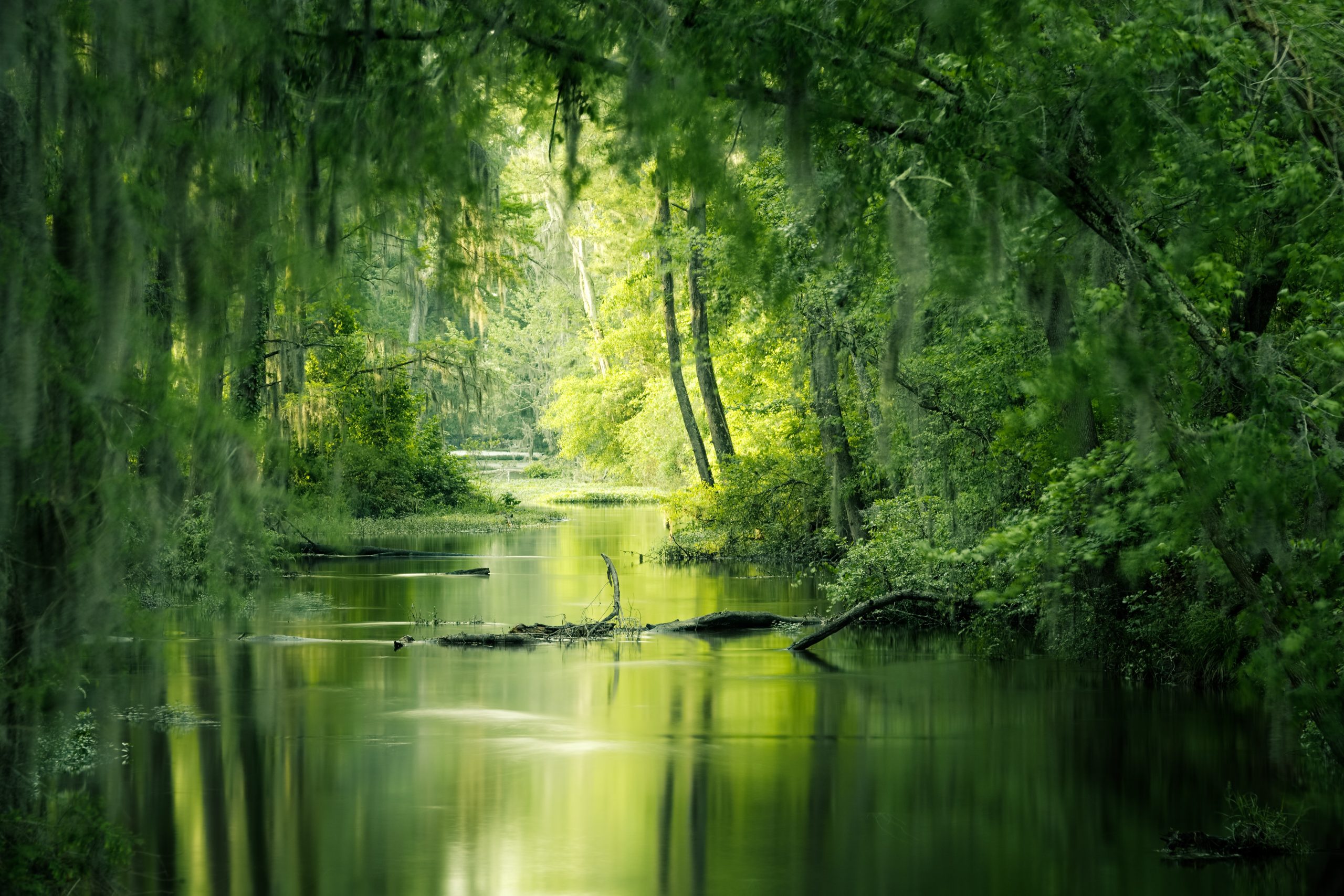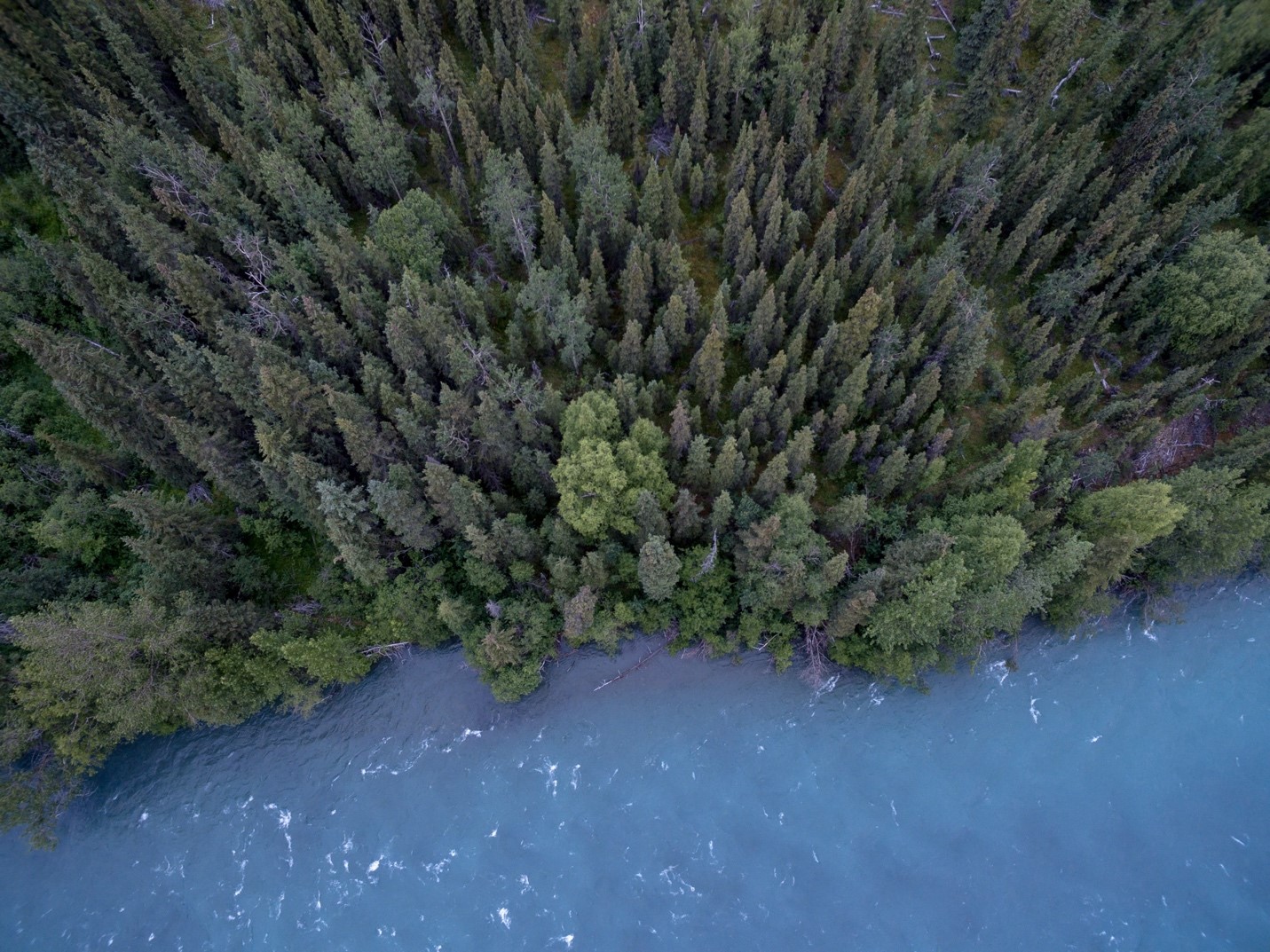What is a swamp and what is an ecosystem? A swamp is a forested wetland or a land covered in water for a period of time or permanently. It may have started out as a pond, a lake or any shallow body of water where shrubs, bushes and trees have grown over time. Swamps are named after the type of tree dominating them.
An ecosystem, on the other hand, is a group or community of living organisms living and interacting in a common habitat. So, a swamp ecosystem consists of a diverse collection of big and small plants, trees, insects, animals and even microorganisms interacting all together, doing their part trying to achieve balance and stability in the swamp they are living in.
The swamp ecosystem, just like any other ecosystem, is constantly evolving. The interaction is not limited to the plants, animals or microorganisms but to all living in it. Examples of the interactions are the way plants regulate the temperature in the swamp, or how animal droppings and decaying plants help feed the soil and make it suitable for other plants to thrive. But no matter how swamp ecosystems try to achieve balance, they just can’t. Natural imbalances will always be there, natural disasters and calamities included.
Exploring Swamp Ecosystem
Are you up for exploring a swamp ecosystem? They are found everywhere in the world, except in Antarctica. Here are the top swamp ecosystems you can visit around the world.
The Everglades in Florida, USA
Book an airboat tour so you can see the whole swamp area. Or you can go for a guided kayak ride with some fishing adventure. This swamp ecosystem is a connection of several wetlands which span around two million acres, covering central and south Florida. Water overflowing from Lake Okeechobee passes through the sawgrass marsh, flowing southwards into the cypress swamps and mangroves, reaching the Everglades and then the Florida bay.
The Everglades swamp ecosystem is known for its beautiful wildlife diversity. If you want to go birdwatching, this is the right place for you, with over 360 bird species just in the national park alone. You are sure to encounter ibises, spoonbills, storks, egrets and herons on your visit, to name a few. Different reptiles and diverse orchid species can also be seen here.
The Atchafalaya in Louisiana, USA
This swamp ecosystem competes with the Everglades as the largest river swamp in the US. It is found just west of the Mississippi river. Bald cypress, alligators, egrets and moss are just a few of what you can see here.
Also known as “America’s Wetland,” it covers Simmesport, Pierre Part, Morgan City up to the Gulf of Mexico. It is home to more than 65 amphibian and reptile species, over 100 fish species, and about 250 bird species. This swamp ecosystem is also famous for having the bald eagles’ largest nesting concentration. It also boasts as the most productive river basin in North America, with an average commercial harvest of about 10 million kilograms of crawfish every year.
The Pantanal in Brazil
A nature lovers’ paradise, Pantanal is the biggest tropical swamp in the world. It is home to more than 10 million caimans and holds the record for most crocodiles in the world. You can also see the hyacinth macaw in Pantanal, the largest parrot in the world. This enormous wildlife diversity is the reason why Pantanal attracts about 1 million tourists every year.
The Okavango Delta in Botswana
This swamp is a UNESCO World Heritage site and belongs to Africa’s Seven Natural Wonders. What’s unique about this swamp is that it only gets flooded once a year, and it happens during the dry season. Even the native animals and plants have adjusted their biological cycles to match the seasonal rains and floods in this area.
Only the elites have access to this swamp because the Botswana government limits tourism in the efforts of keeping the ecosystem as natural and pristine as possible. A lot of endangered species can be seen here, like the white and black rhinoceros, cheetah, African lions and wild dogs.
The Asmat Swamp in Indonesia
The dense and remote swamp features palm trees and tall grasses inland, and mangroves on its shoreline. It also is the world’s biggest alluvial swamp. Tours in this swamp may include close encounters with the Asmat tribe people, to whom the swamp was named after. Asmat swamp ecosystem includes sea snakes, crocodiles, crabs, huge lizards, nurse sharks, dolphins, etc.
Preservation of Swamp Ecosystem, Why it’s Important
Swamp ecosystems are in constant danger not only because of the continuous land development, pollution, water drainage and deforestation, but as well as the wide spread of invasive species. Preservation efforts are very important to keep enjoying their natural gifts.
Biodiversity
Swamps provide a conducive habitat for both plants and animals to thrive, minimizing the risk of species being included on the endangered list. They serve as nesting grounds for both aquatic and land animals or perch for birds hunting their prey, among many others.
Natural Flood Management
Floods can cause significant damage, especially to urban areas. Swamps can provide flood protection and act as nature’s big sponges that can trap excess rainwater and slowly release it, lowering the risk of flooding. The vegetation in the swamp ecosystem also serves as a guide that slows down and distributes the water evenly across the flood plains.
Natural Water Purification System
Plants and microorganisms in the swamp ecosystems can absorb agricultural and industrial chemical runoffs, purifying water in the process. Some plants can even absorb copper and iron, effectively filtering them out from the water.
Ally in Climate Change
Carbon dioxide is the main culprit in climate change. Trees, shrubs, grasses, and other swamp plants break down and decay in the swamp soil, trapping carbon dioxide and locking it into the ground. This slows down climate change dramatically. Destruction of swamps and other wetlands may cause rapid release of the trapped carbon dioxide, and may hasten climate change.
Conclusion
Swamp ecosystems are habitats to various plants and animals. They are constantly threatened by human activities like building construction, industrial and residential areas, and removing vegetation. When our wetlands are destroyed it could cause serious damage to us – floods, drought, water pollution, and eventually the decrease in wildlife population. It’s our duty to care for these ecosystems because it benefits us and future generations.







